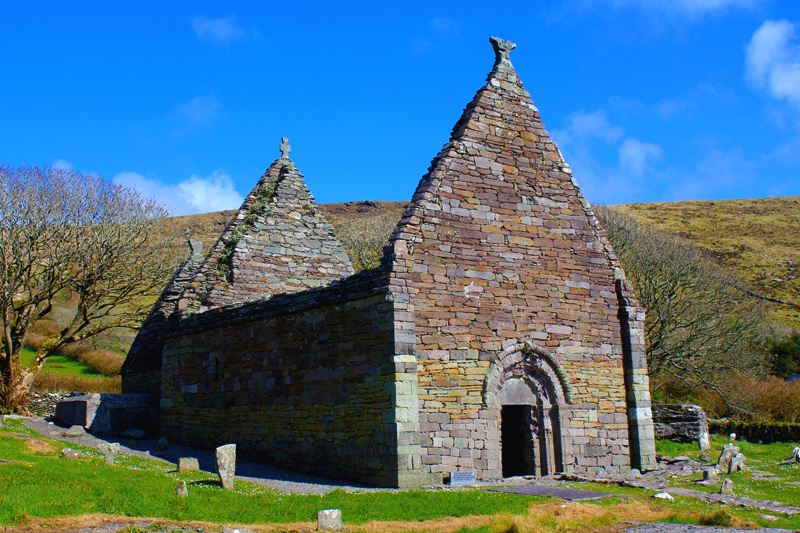
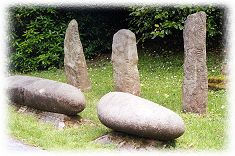 The local area is steeped in history and has many great historical attractions. The oldest settlement on the peninsula is at Ferriter’s Cove and dates to around 4,300 B.C. The cattle bones found at Ferriter’s Cove are the oldest cattle bones found in either Ireland or the UK. The Celts built great forts all around the area and following the arrival of Christianity in the 5th and 6th centuries many churches and monasteries were established.
The local area is steeped in history and has many great historical attractions. The oldest settlement on the peninsula is at Ferriter’s Cove and dates to around 4,300 B.C. The cattle bones found at Ferriter’s Cove are the oldest cattle bones found in either Ireland or the UK. The Celts built great forts all around the area and following the arrival of Christianity in the 5th and 6th centuries many churches and monasteries were established.
The great famine, An Gorta Mór, of the 1840s, took its toll on the population of Ireland following the failure of the potato crop. 1847 was the worst year of famine and became known as Black 47. Despite being able to rely on sea for fish the famine also affected the Dingle Peninsula and many of the survivors emigrated to America and England especially from the ports of Blennerville (outside Tralee) and Cobh (formerly known as Queenstown) in County Cork. Between 1848 and 1950, over 6 million emigrated from Ireland with 2.5 million emigrating from the town of Cobh. There is a large exhibition on Irish emigration at “The Queenstown Story”, in Cobh, Co. Cork.
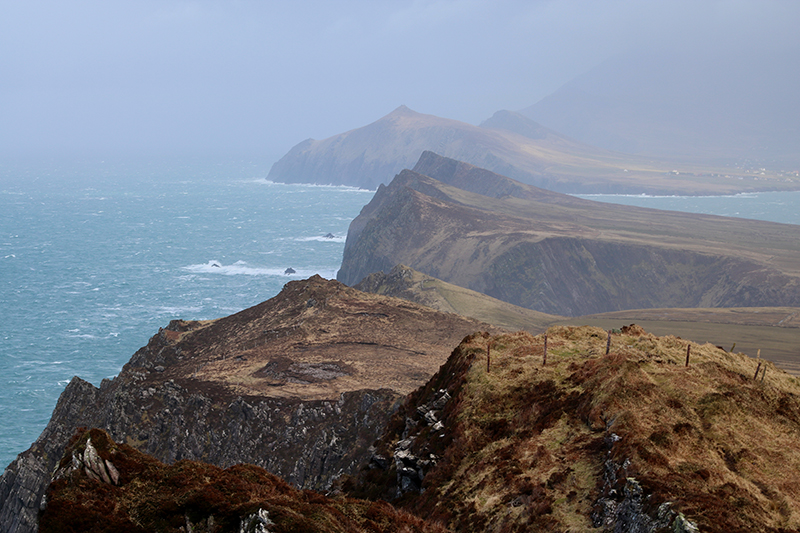
Famine relief projects, such as the Signal Towers on Ceann Sibéal and Ballydavid Head, were created to alleviate the poverty and give the communities some money to purchase food. The ruins of the towers can be accessed by walking through private lands. The Signal Tower on the top of Ceann Sibéal was 40 feet high and 30 feet square. From the Tower, the sister towers on the Great Blasket and Ballydavid Head can be seen. It is very dangerous at the top with a sheer cliff of nearly 700 feet. Permission to pass through the fields to visit the Tower may be required from the landowners.
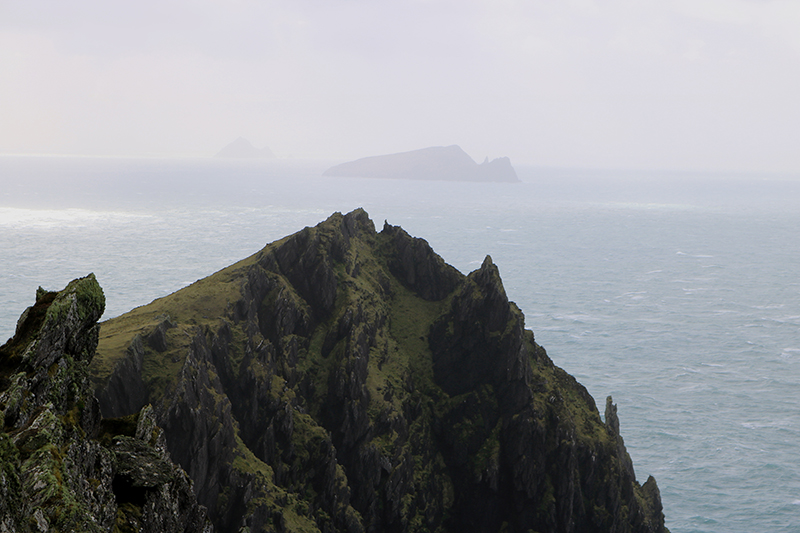
Ceann Sibéal has also been chosen for filming on Star Wars episode VIII, the follow-up to “Star Wars: The Force Awakens.” For more information, see the RTE News report The Force is back in Kerry as Star Wars crew returns.
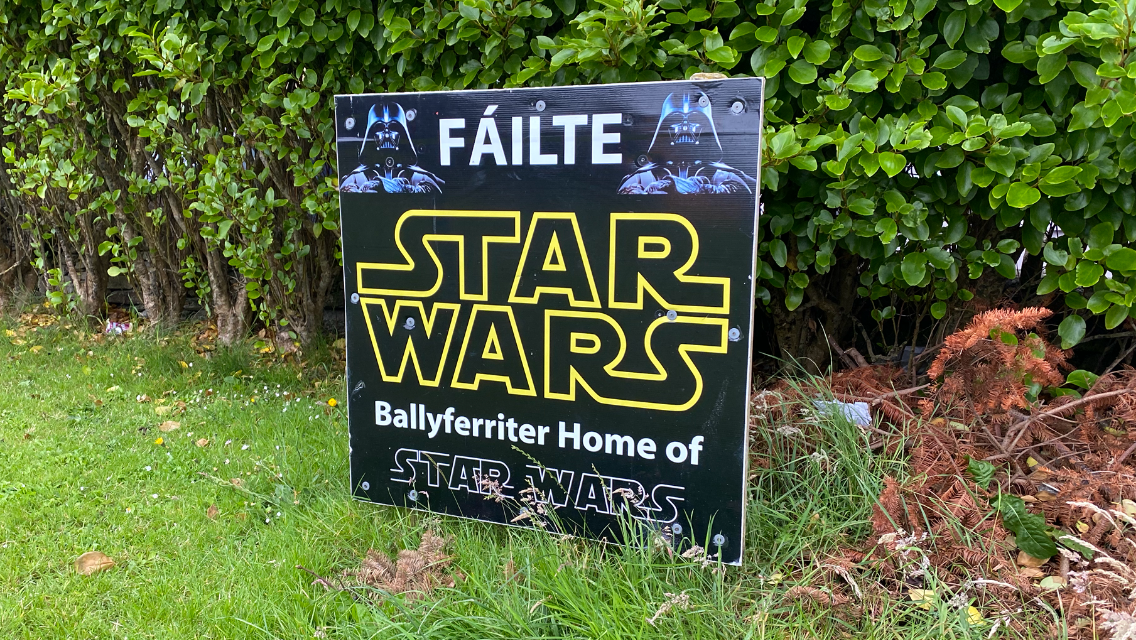
PIARAS FEIRITÉAR (PIERCE FERRITER)
Behind the B&B are the ruins of Ferriter’s Castle, where the poet and soldier Piaras Feiritéar (or Pierce Ferriter) was born. He was one of the last Irish Chieftains to be defeated by the Oliver Cromwell’s forces. He was hanged in Killarney in 1652. For more information see –
Pierce Ferriter – our great patron or
Treasure of Fortune
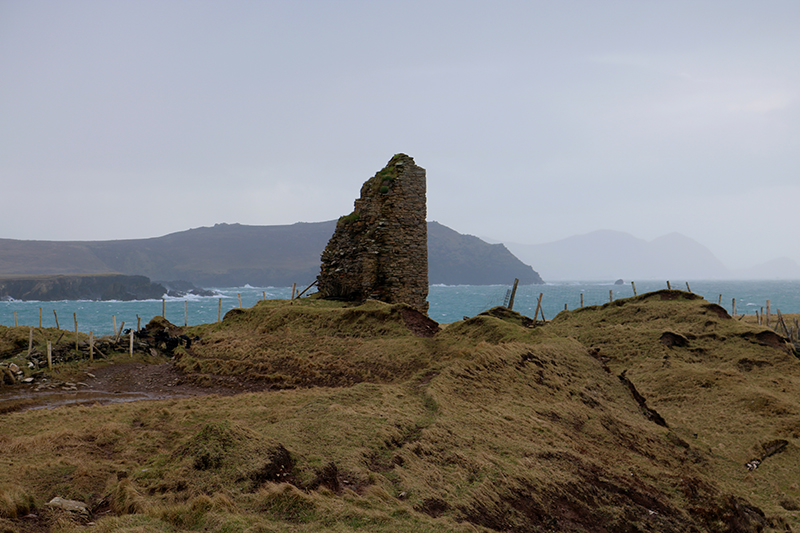
SPANISH INVASION – DÚN AN ÓIR

In 1580, a small invasion force of Spanish and Italian soldiers landed at Smerwick Harbour to assist the Irish in the Desmond Rebellion. After being joined by Irish soldiers their number increased to about 600. After fortifying themselves within the defences of the fort at Dún an Óir (The Golden Fort), they were surrounded by a larger English force commanded by Lord Grey. After a three day siege, the Irish, Spanish and Italian soldiers surrendered to Lord Grey, only to be slaughtered by the English soldiers. Little remains of the fort today, but there is a monument at the entrance to the site. The sign posts to the site of Dún An Óir also carry the Spanish name of the site “Fort del Oro” in honour of the Spanish soldiers who were slaughtered.

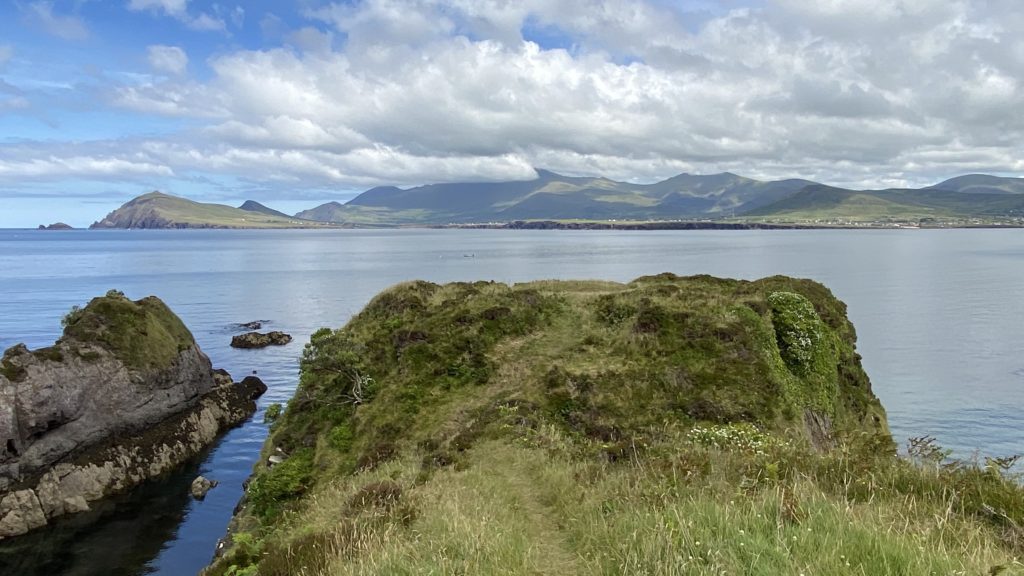
SPANISH ARMADA – BLASKET SOUND
In 1588 the Santa Maria de la Rosa and San Juan of the Spanish Armada were shipwrecked between the mainland and the Blasket Islands. There is a monument commemorating the tragedy on the cliffs above the Blasket Sound. A large collection of artefacts recovered from the shipwreck is on display in the Ulster Museum, in Belfast.
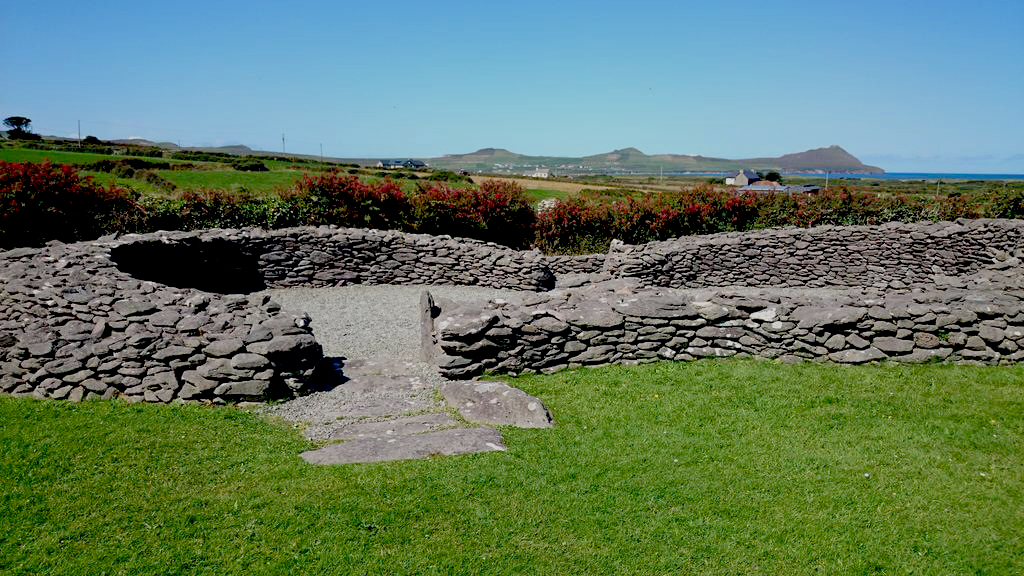
RIASC
Riasc or Reask on the road from Ballyferriter to Dingle is an early Christian monastic settlement that dates from the 5th to 6th Century AD. There are at least 10 cross-inscribed slabs, the most famous of which is the Reask Stone, decorated with spiral designs and carved with the initials DNE, short for the Latin Domine (“Lord”).
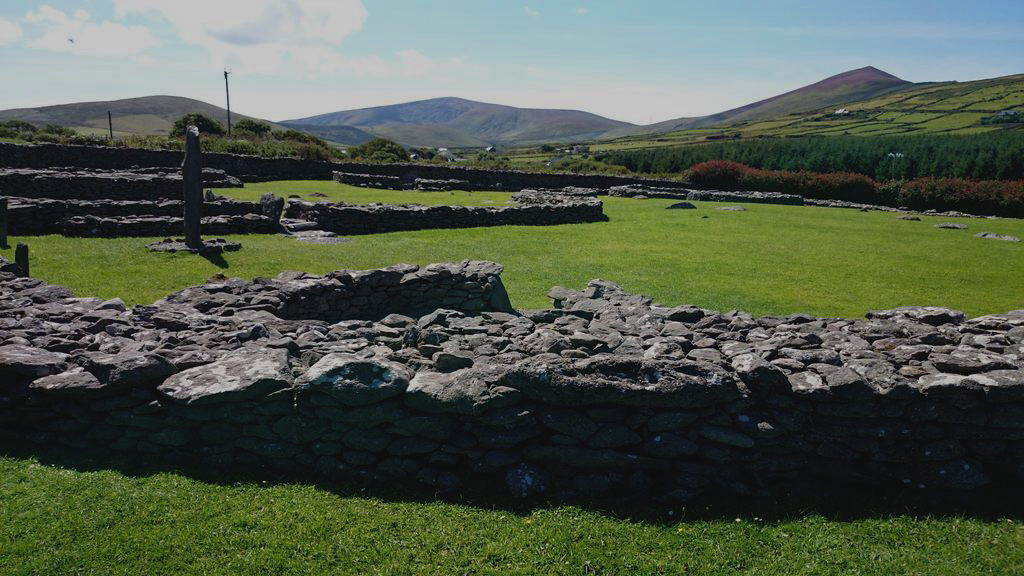
GALLARUS ORATORY
Gallarus Oratory is a small early Christian church built entirely of stone without mortar. After more than 1,000 years it is still watertight. At the visitor centre there is a shop, café and audio visual display. Nearby is the 16th century Gallarus Castle (now being restored) that was used to garrison Lord Grey’s soldiers during the siege at Dún and Óir.
KILMALKEDAR (Cill Maolcheadair)
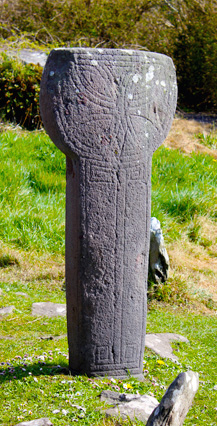
Founded in the 7th Century by St. Maolcheadar. An important early Christian site.. The site has an ornate 12th century Hiberno-Romanesque church, an alphabet-stone, stone cross, ogham stone and a sundial. St. Brendan the Navigator is believed to have lived here. The site also became a centre of education with scholars coming from Europe.
VENTRY
The beautiful sandy beach in Ventry Harbour was the scene of the ancient battle “Cath Fionntrilgha” (The Battle of Ventry Strand). Legend says that it was on this beach that Fionn Mac Cumhaill and his band of warriors, the Fianna, defeated Daire Donn (the King of the World) and his warriors as they attempted to invade Ireland.
FAHAN BEEHIVE HUTS
Just off the road between Ventry and Slea Head, are the Clocháns or Beehive Huts. These stone huts were used by hermit monks for prayer and fasting.
DUNBEG
Site of an elaborate Iron Age ring fort with an elaborate souterrain, which is now a ruin gradually crumbling into the ocean. Because of erosion from the sea the site is dangerous.
DUNMORE HEAD
Dunmore Head, the most westerly point of Ireland’s mainland, was once the site of a large fort of which only some of the earthwork defences remain. On the headland is an Ogham Stone, inscribed in Ogham with the name Dovinia after whom the area Corca Dhuibhne is named.
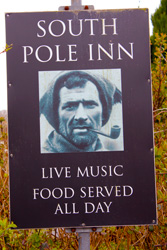
TOM CREAN
One of Dingle Penisula’s most famous sons was Tom Crean 1877-1938. The legendary Antarctic explorer was born in Annascaul in 1877 and joined the Royal Navy when he was 15 years of age. He was part of Captain Robert Scott’s ill-fated race to be the first to reach the South Pole. He later travelled on both of Ernest Shackelton’s expeditions to the Antarctic. He was awarded the Albert medal after his 35-mile (56 km) solo walk across the Ross Ice Shelf to save the life of Edward Evans. When he retired from the Navy he returned to Annascaul and opened a pub called The South Pole Inn. He died in 1938 and is buried in Ballincourty Graveyard in Annascaul. A statue was erected to him opposite the South Pole Inn.
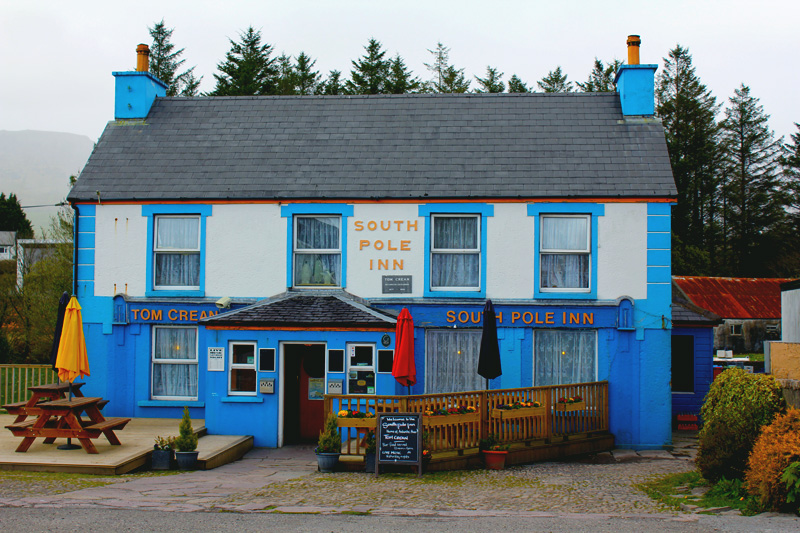
BRANDON CREEK
Brandon Creek from which St. Brendan is reputed to have set sail to discover America around 900 years before Christopher Columbus. In 1976, Tim Severin used it as his starting point for “The Brendan Voyage” as retraced the route taken by St. Brendan’s in a traditional boat similar to that used by St. Brendan. Tim Severin reached Newfoundland the following year and his story is told in his book and TV documentary titled “The Brendan Voyage”. The boat used by Tim Severin is now on display at Craggaunowen, Co. Clare. On the pier in Brandon Creek are some traditional fishing boats, known as Naomhógs or Currachs. There is a monument to the voyage just above the creek.
For more about the history of West Kerry see West Kerry Museum – Músaem Chorca Dhuibnhe




















